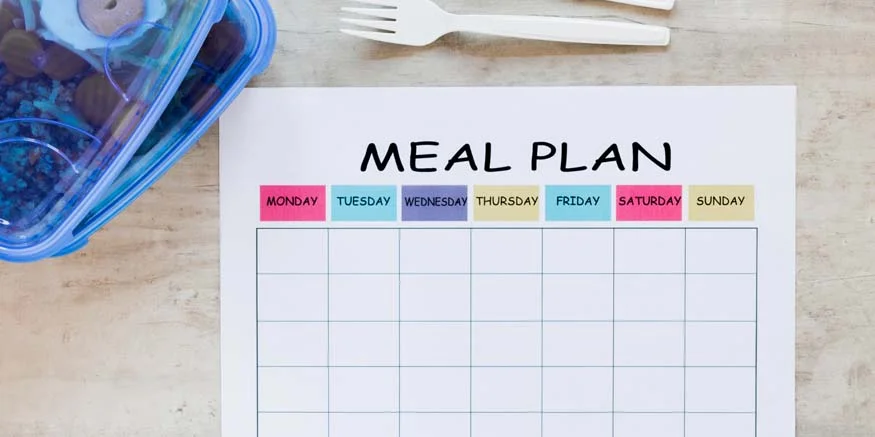Child upbringing is a crucial aspect of parenting that lays the foundation for a child’s future development. One effective tool used by many parents in this attempt is the routine chart.
A well-designed routine chart serves as more than a mere schedule—it is a visual aid that supports the development of healthy habits, self-discipline, and organizational skills among children. This blog highlights the many benefits associated with the use of routine charts in child-rearing.
- Structure and Consistency
- Encouraging Independence
- Time Management Skills
- Good Habits Formation
- Reducing Stress and Anxiety
- Enhancing Parent-Child Relationship
- Better Academic Performance
- Developing Responsibility
- Positive Behavioural Reinforcement
- Reducing Power Struggles
- Improved Sleep Patterns
- Enhanced Self-esteem
- Flexibility
The most immediate benefit of using a routine chart is introducing a structured environment for children. Consistent routines help children understand what is expected of them at different times of the day. This predictability contributes to a sense of security and stability, allowing them to thrive in an organized setting.
Routine charts often include daily tasks that children are responsible for completing independently. This instils in them a sense of autonomy and encourages self-reliance. By accomplishing these tasks, children gain confidence in their ability to manage their routines and make decisions, which are essential skills for their future independence.
Time Management is another important skill that routine charts help develop. Children learn to allocate specific times for activities such as homework, play, and chores. This understanding of managing their day effectively is a skill that will benefit them throughout their lives.
Routine charts support the formation of good habits as well. When children follow a routine chart consistently, behaviours such as brushing their teeth, packing their school bag, or doing homework become habitual. These positive habits are likely to remain with them into adulthood.
For both parents and children, routine charts can reduce stress and anxiety. Knowing what to expect and when to expect it mitigates the fear of the unknown, which is often a source of anxiety for children. A clearly outlined routine can diminish the occurrence of meltdowns and temper tantrums associated with unexpected activities or tasks.
Employing a routine chart can also enhance the parent-child relationship. It provides a framework for parents to spend quality time with their children, whether during a bedtime routine or shared mealtime. This can strengthen communication and bonding within the family unit.
The organizational skills that routine charts foster are directly transferable to an academic environment. Children who are accustomed to structured environments at home are better able to adapt to the routines and expectations of school, often resulting in improved academic performance.
Routine charts often delegate specific chores or tasks to children, teaching them about responsibility and the importance of contributing to the household. This early sense of duty can cultivate a strong work ethic and a sense of accomplishment when tasks are completed.
Routine charts can be used to positively reinforce desired behaviours. By providing a visual representation of their progress, children can see the immediate rewards of their actions. This can be particularly effective when working to correct problematic behaviours or instil new, more positive ones.
A routine chart can minimize power struggles between parents and children. Since the expectations are clearly outlined on the chart, there is less room for negotiation and argument. It can serve as an impartial guide for what needs to be done, thus reducing tensions and conflicts.
Having a routine, especially one that includes a consistent bedtime, helps regulate a child’s circadian rhythm. As a result, children can establish better sleep patterns, which are crucial for overall health and development.
As children successfully manage their routines, they experience a sense of accomplishment. This success fosters improved self-esteem and the belief that they are competent individuals.
Although routine charts advocate for structure, they also teach children about flexibility. Life may sometimes necessitate a change in routine, and children learn to adapt to these changes while maintaining their responsibilities, which is an important life skill.
Also Read: 15 Foods to Avoid for Babies Younger Than 1-Year-Old
Creating a Routine Chart
A particular area of focus within routine charts that deserves special attention is nutrition, especially the food chart for preschoolers. A food routine chart can be an excellent tool for parents and educators to ensure that children receive the nutrition they need throughout the day. This structure also helps in establishing a reliable routine that can make mealtimes predictable and less stressful for preschoolers.
The chart can simplify the decision-making process by providing a visual aid that outlines what and when children will eat. This planning enables caregivers to take into account the required intake of fruits, vegetables, proteins, grains, and dairy as recommended by paediatric nutritional guidelines. Here is how to create an effective chart:
1) Draw up a weekly plan: To start, create a weekly plan that includes a variety of foods to introduce children to different flavours and textures. The chart should include specific times for breakfast, lunch, snacks, and dinner that align with the preschool’s schedule. Between meals, it is essential to have regular intervals for snacks to maintain energy levels and keep children satisfied.
Also Read: The Importance of Food Security and Nutrition for Children
When creating the food chart of healthy food, consider the following:
- Nutritional balance: Ensure each meal includes appropriate portions from the different food groups.
- Allergies and dietary restrictions: Take into account individual dietary requirements of children in the planning.
- Seasonal and fresh produce: Incorporate seasonal fruits and vegetables to provide variety and peak nutrition.
- Portion sizes: Tailor portion sizes to the age and appetite of the children.
2) Keep them involved: Engaging with the children in developing the chart for food can also encourage them to be more interested in what they eat.
3) Make it appealing: Including pictures of the food can help non-readers understand the chart more easily. Placing the chart at eye level for children allows them to see and anticipate what is coming next in their day.
4) Stay consistent: Consistency is key. Sticking to the routine aids in developing a natural body rhythm and can lead to better eating habits. However, flexibility should also be incorporated for special occasions or when adjustments are required to accommodate specific needs.
5) Monitoring is crucial: After implementation, it is crucial to evaluate and adjust the chart regularly. This evaluation may include switching out certain foods that are not well-received or adjusting meal times if they’re not syncing well with the children’s hunger cues.
Routine charts create a stable and secure environment that is conducive to learning and development. In implementing routine charts, parents are empowered to effectively guide their children towards becoming well-rounded, capable individuals ready to face the world’s challenges. It is a modest investment in time and effort that yields significant returns throughout a child’s developmental journey.
For more such informative blogs, Visit EuroSchool!









